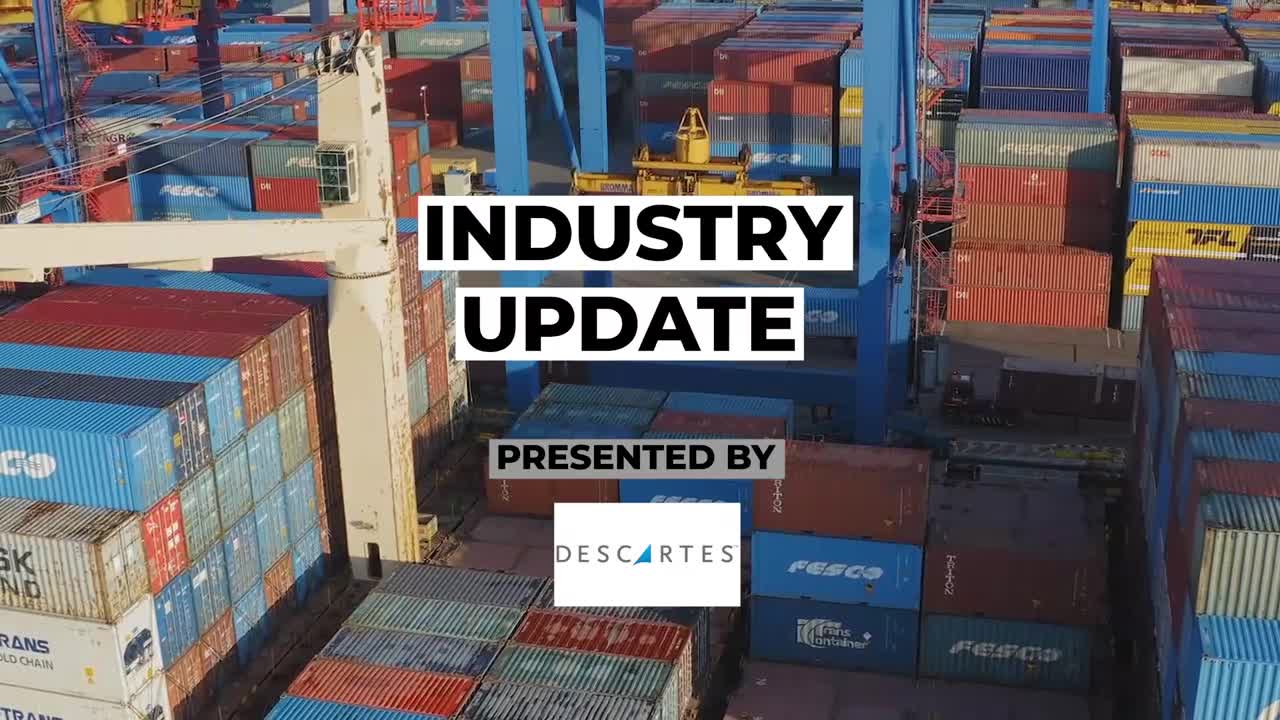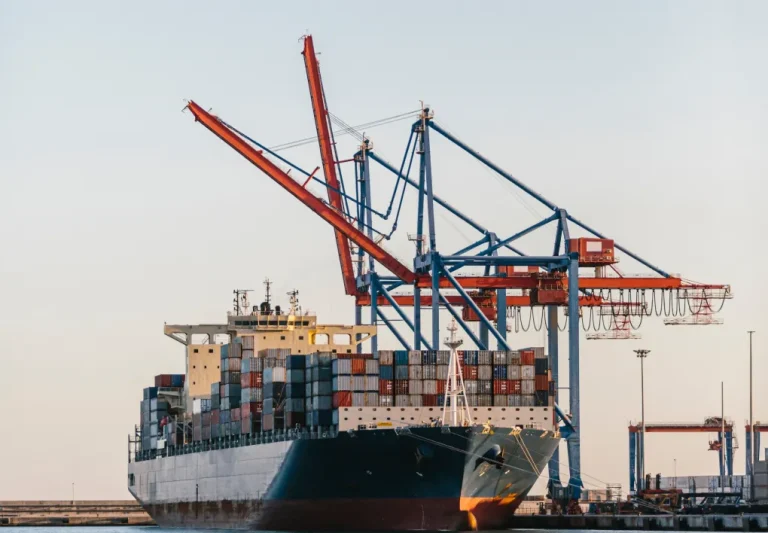Key Takeaways
- Demurrage vs. Detention: Demurrage charges arise from container delays at ports, while detention applies to delays outside the port.
- Financial Impact: Demurrage and detention charges significantly elevate shipping costs, with nine carriers collecting $12.9 billion from 2020-2023.
- Tech Solutions: Real-time visibility platforms, like Descartes MacroPoint’s Ocean Visibility, mitigate these charges by enhancing supply chain efficiency and proactive decision-making.
What Are Demurrage and Detention Charges? Here’s How They Work.
The world of fees and costly fines isn’t limited to parking tickets.
The sea freight industry, where shippers, brokers, and carriers work hand in hand to move more than 80% of the worlds consumer goods is inundated with demurrage and detention related fees.
What are demurrage and detention fees?
Demurrage: Refers to the time when the container or vessel is delayed by the charterer and is outside the free time allowed (the time allowed to load and unload cargo). A container getting hit with demurrage charges could be at the port/terminal waiting for the consignee to pick it up, or it could also be a full container at the port waiting to be exported, but the container cannot be shipped out due to a non-carrier related issue (paperwork, etc.).
Detention: (also per diem fee) happens when a container is held by the consignee outside the port/terminal past the free time allowed.
Free Time Allowed: In order to ship goods across our oceans, containers are utilized and rented out by shippers. These containers have allotted or free times, meaning shippers have a limited amount of leasing time with the container to execute their inland cargo transportation.
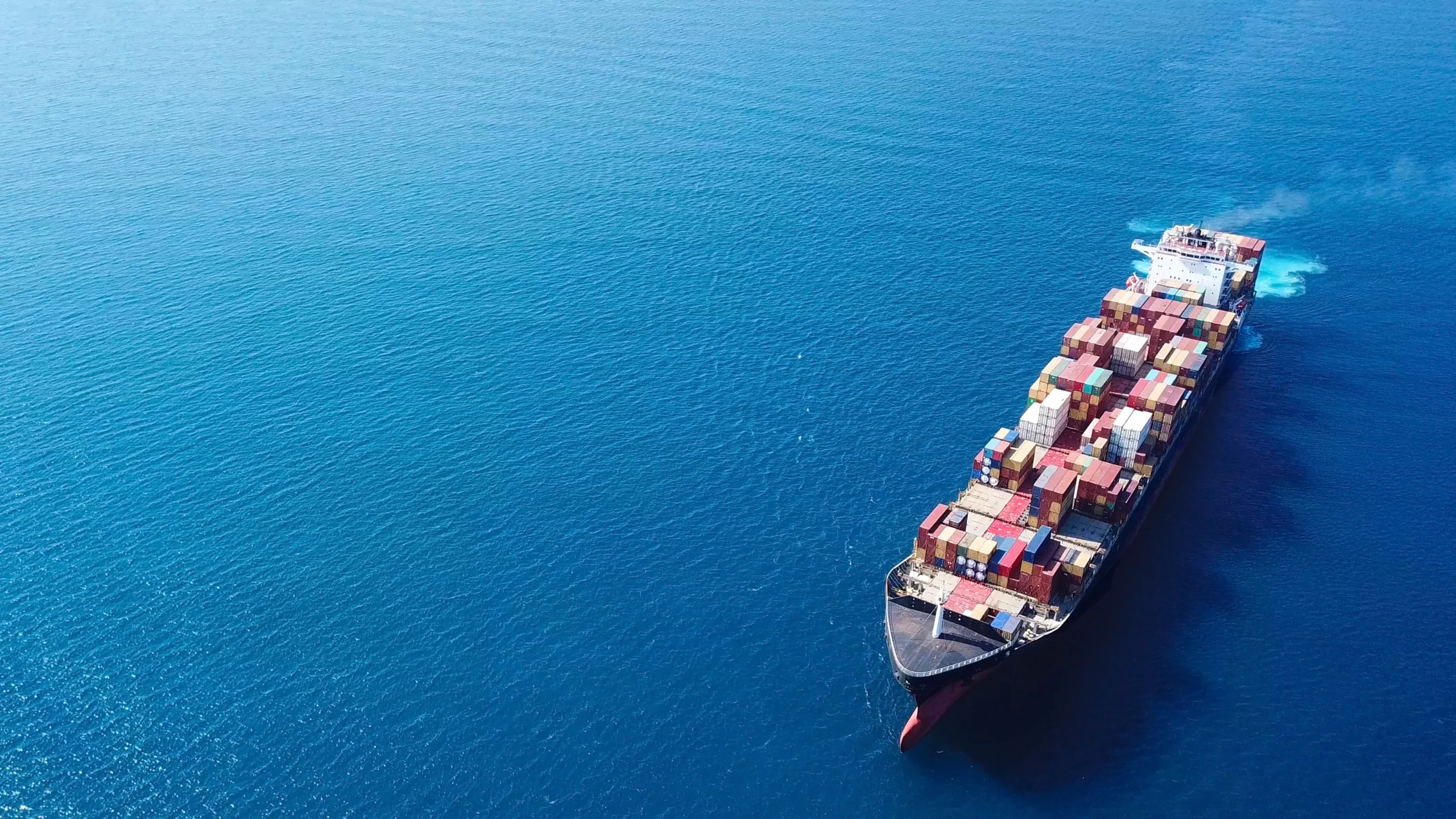
Demurrage vs Detention Differences
When it comes to demurrage vs detention fees, the two types are often confused.
The main difference will depend entirely on the location of the container when container free time is exceeded.
Demurrage fees are due when the container is generally stuck in a port, while detention fees are subject when the container is in transport at any other location.
Challenges Associated with Container Shipments and Ocean Freight
Volatile Prices
International ocean shipments became very expensive during the pandemic, where shippers saw shipping from China to west coast of the United States skyrocket to $20,000 for a 40 ft container.
While the shipping rates are basically back to pre-pandemic levels, shippers have opportunities to reduce their costs even further by managing the added or extra costs that get incurred in ocean shipping.
One of the most frequent extra costs are demurrage and detention charges that result from storage costs for cargo that remains at the port of discharge for too long or those that have not returned to the depot.
These fees can easily add 50% to the cost of shipping the container for just a few days of demurrage. And with the volumes of containers in the global marketplace, these fees add up quickly and inevitably will get passed down the supply chain to end consumers.
Due to the spike in these fees during the pandemic the Federal Maritime Commission initiated a fact-finding study where they collected data from nine carriers and found that those 9 carriers have collected around $12.9 billion in detention and demurrage charges between April 2020 and March 2023. (https://www.fmc.gov/detention-and-demurrage/)
Sailing Schedules/Poor Communication
Another major factor impacting added costs and fees in 2023 are the irregular sailing schedules and sometimes poor communication between ocean liners, forwarders, shippers, and trucking/dray operators.
Shippers may not have adequate time to plan a pickup without knowing when the container will be available, having to coordinate with port/terminal, as well as their own warehouse, operating hours to efficiently move containers.
Without visibility, shippers are left with costly charges and poor data and insights that result from inefficient planning.
Lack of Visibility
Without real-time visibility into the location and status of ocean cargo, shipping companies face a heightened risk of delays and disruptions throughout the supply chain.
Delays can occur at various stages, from loading and unloading at ports to customs clearance and transportation inland. These uncertainties can have a ripple effect on downstream operations, impacting production schedules, inventory management, and customer commitments.
Additionally, the inability to predict accurate Estimated Time of Arrival (ETA) can lead to inefficient resource allocation and increased costs as companies often resort to expedited shipping or excessive safety stock to mitigate the risks associated with poor visibility.
A lack of visibility can also hinder effective decision-making. In the absence of real-time data, supply chain managers and stakeholders may struggle to make informed choices regarding route optimization, warehouse allocation, and resource allocation. This can result in suboptimal choices that not only impact operational efficiency but also erode profitability.
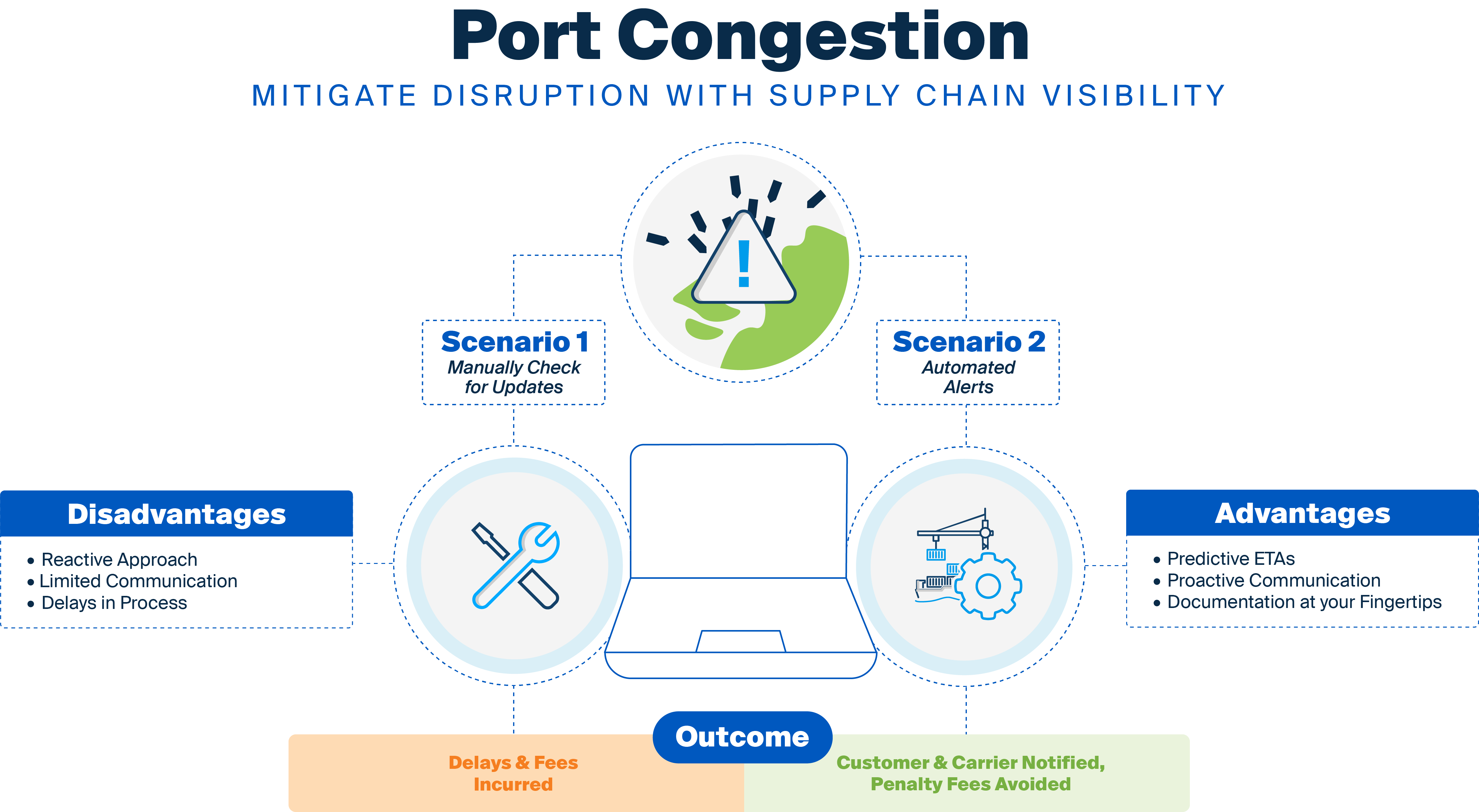
The Impact of Demurrage and Detention on Your Business
Adding to the complexity, the amount of free time of container(s) will not be the same across ports or with different shipping lines.
To effectively manage and reduce these charges, shippers need to understand the amount of free time on each container (last free day) so planners can prioritize moving containers based on customer service requirements as well as to reduce detention and demurrage fees.
Demurrage and detention charges are typically surprise charges and difficult to plan in your budget. Anything not budgeted for, no matter the amount, will draw the attention of management and therefore is another reason to minimize those added fees.
With better foresight and visibility, along with proactive communication with customers and partners, all parties can be kept in the loop regarding the status of containers. This will aid in the timing as well as the next steps regarding shipment journey, ultimately reducing the amount of time containers are sitting still.
In the event there is a delay with a container, being able to communicate early on the delay and provide a new confident ETA will go a long way in enhancing customer relationship, all by simply allowing them to adjust their operations based on new information.
How Much Do Demurrage and Detention Fees Cost?
Demurrage fees can vary widely depending on several factors, including the type of cargo, the port, the shipping line, and the terms of the contract.
However, shippers can expect demurrage fees to range from $50 – $300 everyday over the extended period of free time per container.
Detention fees will at minimum cost you $25 and as much as $100 for every extra day you exceed the allotted free time.
How To Avoid Demurrage and Detention Fees?
There are many strategies to reduce your detention and demurrage fees.
Negotiation: The most straightforward strategy to avoid fees is by negotiating for more free time with carriers, but that can be difficult, especially if you’re not shipping a large amount of volume. In addition, port congestion is still working itself out, causing the shipping lines to keep free time on containers rather short.
Dispatch: Shippers should attempt to dispatch freight in a timely and early manner, as well as pass shipment information on availability of the container across the stakeholder network as soon as it’s available and re-share with any changes.
Customs Clearance: Another best practice is to obtain customs clearance prior to the container arriving at the port. All documentation should be accessible, and duties paid in advance. A very common delay that leads to demurrage fees is to not have your paperwork complete for customs or in some cases the paperwork can even be ‘lost’. This leads to the container sitting at the terminal, eating into free time while the documentation is sorted.
Communication: The best-in-class global shippers are communicating with their inland carriers well in advance of the arrival and clearance on their shipments. This helps improve the efficiency and flow of shipments. It is also a good idea to have a backup plan for carriers if there are issues with primary dray or inland transport provider.
Real-Time Visibility Platforms: To automate communication and monitor at-risk containers, companies are using real-time visibility platforms which allow shippers and logistics providers to track shipments and containers in real-time. This means they can monitor the exact location and status of goods throughout their journey, and receive alerts if there’s a disruption or delay, thus reducing the risk that can lead to demurrage and detention charges.
Pro Tip: If you do encounter demurrage and detention fees that you think are incorrect you should be able to dispute the charges through the carrier’s dispute resolution policy. Having real-time visibility data on the container’s movements and status will help you document your case to the carrier and have erroneous charges removed from your invoice.
Utilizing Technology to Combat Ocean Related Fees
The greatest approach to minimizing demurrage and detention charges is to prepare early.
Incorporating the power and precision of a real-time visibility platform completely changes the landscape of tracking containers and sea freight.
By gaining insights into the status and location of cargo across the network, freight organizations and their teams can easily disseminate the information to the appropriate stakeholders. These can include shipping/receiving locations, manufacturing plants, in-land transportation providers, and end-customers.
Ocean visibility platforms often incorporate predictive analytics; analyzing historical data and current conditions to provide estimated arrival times for shipments.
Real-time visibility platforms will also provide alerts when shipments are approaching their free time at ports or facilities. This early warning allows logistics teams to take proactive measures, such as rescheduling appointments, re-prioritizing transport and unloading to avoid penalties.
Here at Descartes MacroPoint, our ocean visibility platform utilizes a comprehensive dataset from 80+ carriers, 400+ forwarders, 500+ ports/terminals, the top co-loaders, and U.S. Customs and Border Protection to better understand when containers will be available for pickup. This helps in better planning and coordination, reducing the likelihood of cargo sitting idle and incurring penalties.
Having the right information lets decision-makers across the extended supply chain take appropriate actions based on real-time information and predictive ETAs.
Future Trends and Innovations in Ocean Freight
Data Sharing and Collaboration: Real-time visibility systems often facilitate data sharing and collaboration among different stakeholders in the supply chain, including shippers, carriers, and port operators. This coordination helps ensure smoother cargo handling and reduces unnecessary delays.
Performance Monitoring: These systems can track the performance of carriers and service providers. By monitoring service levels and adherence to schedules, logistics managers can choose reliable partners who are less likely to cause delays that lead to penalties.
Buyer’s Guide
What to Look for in an Ocean Visibility Platform
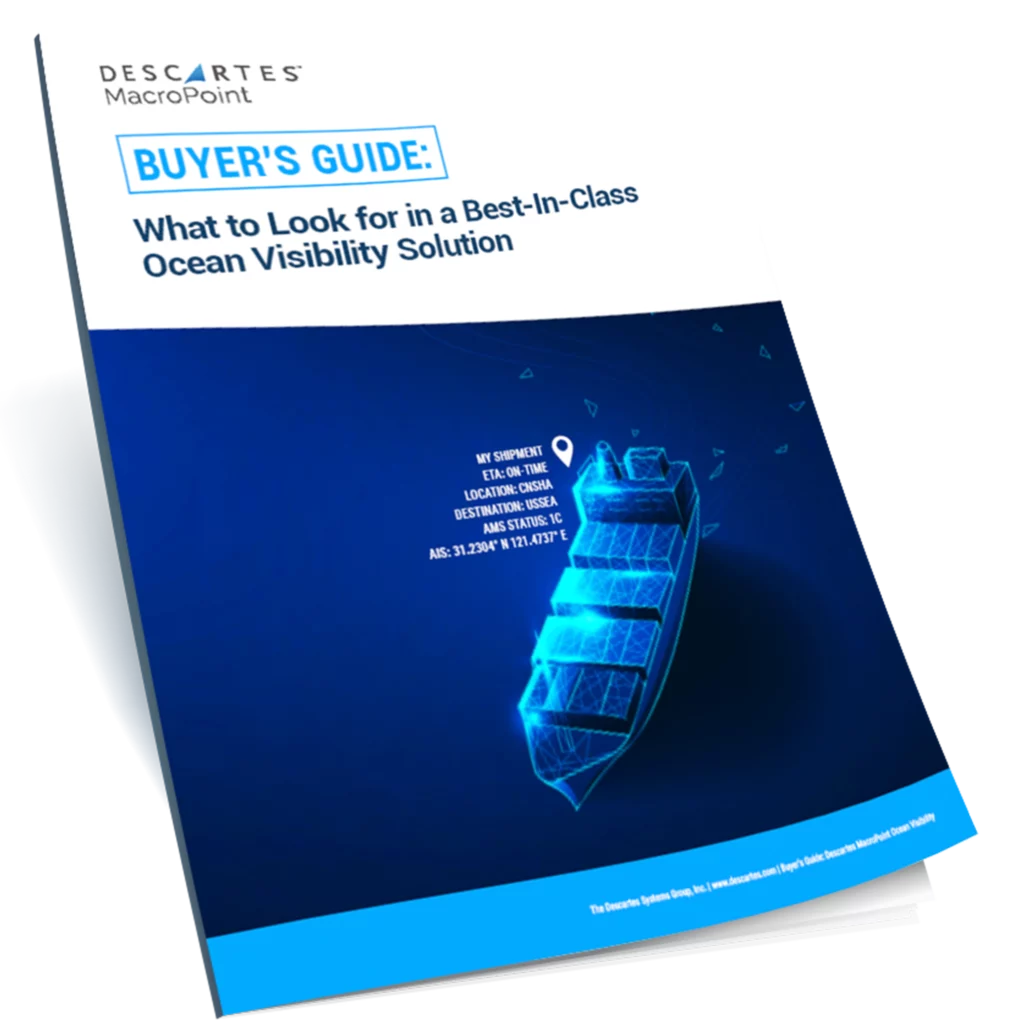
Final Thoughts
In summary, real-time transportation visibility in the form of container tracking is a valuable tool for reducing demurrage and detention penalties by providing greater control, transparency, and proactive decision-making capabilities in the supply chain.
Implementing such systems and processes leads to cost savings and more efficient operations in the long run.
Specifically, Descartes MacroPoint Ocean Visibility is built upon the latest architecture using the Descartes MacroPoint and the Descartes Global Logistics Network™ (Descartes GLN™). The integration and automation capabilities of Descartes MacroPoint’s Ocean Visibility platform go hand-in-hand to deliver insight and efficiency for all company types with ocean container shipments.
The data integrate with Descartes’ TMS platforms, Dock Appointment Scheduling, and other 3rd-party platforms via EDI, Application Programming Interfaces (APIs), or other data transfer protocols.
While there are several visibility solutions on the market, there is a big difference between simply having a solution with the capability of complete visibility, versus a solution that has proven the ability to connect thousands of companies and will capture the data required to enable true real-time visibility into location and status of cargo globally.
Using a solution like Descartes MacroPoint’s Ocean Visibility that is easy to use, is already integrated to your supply chain partners, and has automated capabilities is a surefire way to reduce your demurrage and detention fees and streamline your global operations.
Speak with our team today and to learn how you can reduce ocean fees in your operation.
